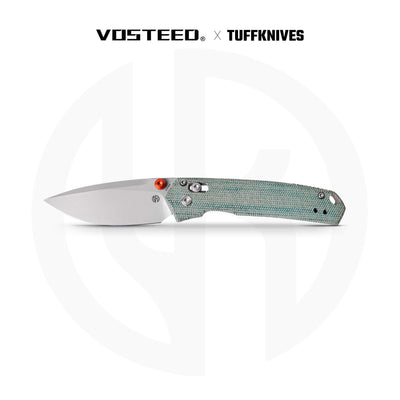Uncover the Hidden Stories Behind Timeless Antique Pocket Knives!
Step into the captivating world of antique pocket knives, where each blade tells a story, and every handle holds a memory. These timeless tools have transcended their original purpose, evolving from practical everyday items into sought-after collectibles that evoke nostalgia and admiration. The allure of antique pocket knives lies not only in their craftsmanship but also in their rich history, which spans centuries and reflects the cultures of their time. As we delve deeper into the realm of these beautiful artifacts, we will explore their origins, the artistry involved in their creation, and the cultural significance that has made them cherished items for collectors and enthusiasts alike.

The Historical Journey of Antique Pocket Knives
The origin of pocket knives can be traced back to antiquity, where simple blades were crafted for practical uses. The earliest forms of these knives emerged around 600 B.C. in the Mediterranean region, primarily used by soldiers, farmers, and tradesmen. As time progressed, the design and functionality of pocket knives evolved significantly. During the Renaissance, advancements in metallurgy and craftsmanship led to more intricate designs, making them not only tools but also symbols of status and craftsmanship. By the 19th century, the introduction of mass production techniques in places like Sheffield, England, revolutionized the pocket knife industry. This period saw the emergence of various styles and forms, catering to the demands of a growing consumer base. Each era influenced the design and use of pocket knives, from essential multi-tools for pioneers to elegant keepsakes for the affluent. Today, collectors seek out these historical pieces, fascinated by the stories of the artisans who crafted them and the hands that once wielded them.
Craftsmanship and Features of Antique Pocket Knives
The craftsmanship of antique pocket knives is a testament to the skill and dedication of the artisans who created them. Unlike modern production methods, antique knives were often hand-forged, with each piece reflecting the unique style of the maker. The materials used in these knives also contribute to their distinctive character. High-carbon steel was commonly used for the blades, providing sharpness and durability, while various natural materials like bone, wood, and ivory were chosen for handles, each offering a different aesthetic and tactile experience. The design elements of antique pocket knives are diverse, showcasing an array of blade shapes, sizes, and mechanisms. Some knives featured intricate inlays and engravings, representing the artistry of the time. A friend of mine, an avid collector, often shares how he was captivated by the intricate floral patterns on the handle of a knife he once acquired. Such details not only enhance the knife's beauty but also tell a story of its heritage and the culture from which it originated.
Materials Used in Antique Pocket Knives
The materials used in the construction of antique pocket knives are as varied as their designs. The blades were typically made from high-carbon steel, known for its ability to hold a sharp edge. Over time, stainless steel became popular for its resistance to corrosion, but many collectors still prefer the character of high-carbon blades. Handles were crafted from a range of materials including wood, bone, and metal. Each material not only served a functional purpose but also added to the knife's aesthetic appeal. For instance, stag antler handles were prized for their natural grip and unique patterns, while smooth wood offered a warm, classic look. The selection of materials often reflected the owner's personal taste and the knife's intended use.
Design Elements and Variations
The design of antique pocket knives varies widely, with different styles reflecting the era and region of production. From the classic foldable designs with a single blade to more complex models featuring multiple tools, the variations are fascinating. Blade shapes, such as clip point, drop point, and tanto, each serve specific purposes, while the size and mechanism can dictate usability. Some knives featured intricate locking mechanisms, which added a layer of safety and sophistication. The diversity of designs illustrates not only the practical requirements of the time but also the cultural influences that shaped these beautiful tools. Each knife is a unique blend of function and artistry, making them a rich subject for collectors and historians alike.
The Cultural Significance of Antique Pocket Knives
Antique pocket knives are not just tools; they are artifacts steeped in cultural significance. Throughout history, these knives have played pivotal roles in various societies. In many cultures, a pocket knife was a rite of passage, symbolizing maturity and independence for young boys. For others, it represented a tool of craftsmanship and survival, essential for tradesmen and farmers. The stories held within these knives are as diverse as their designs. For instance, a friend of mine once recounted how his grandfather passed down a pocket knife that had been used for years in their family business. That knife was more than just a tool; it was a link to their family's history, embodying stories of hard work and dedication. As collectibles, antique pocket knives serve as a bridge between the past and present, inviting us to reflect on the lives and cultures of those who came before us.
Celebrating the Legacy of Antique Pocket Knives
In conclusion, antique pocket knives are much more than mere tools; they are vessels of history and craftsmanship that resonate with stories of the past. From their humble beginnings as practical implements to their status as collectible treasures, these knives have captured the hearts of many. The rich tapestry of their history, unique craftsmanship, and cultural significance make them worthy of appreciation. As we admire these artifacts, let us remember the stories they tell and the hands that shaped them, ensuring that their legacy continues for generations to come. Whether you are a collector or a casual admirer, there is no denying the timeless appeal of antique pocket knives.








